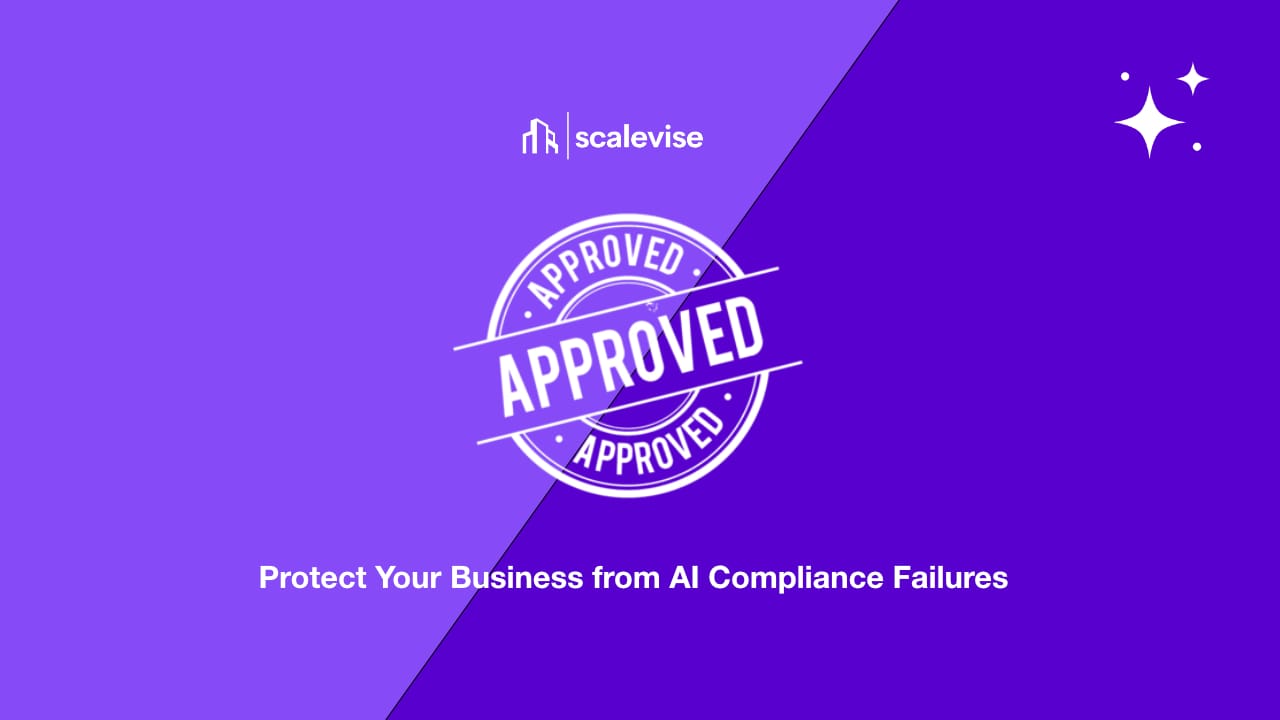How to Make Your AI Workflows Legally Safe

AI is no longer a playground for tech enthusiasts it’s a regulated domain. If you're deploying AI systems in Europe, you're entering legal territory shaped by the EU AI Act, GDPR, and upcoming enforcement waves. And here’s the catch: most companies are not ready.
This article explains how to make your AI workflows legally safe, from disclosure to documentation, without killing your innovation speed.
Why AI Compliance Can’t Wait
The European Union has already started enforcing transparency rules around AI usage. That means your AI stack from marketing automations to AI-driven chatbots might already be subject to legal requirements.
Here’s what regulators expect:
- Disclosure when users interact with AI
- Clear summaries of how AI works
- Labelling synthetic content (deepfakes, AI images, auto-generated text)
- Opt-out mechanisms for profiling or automated decisions
- Documented audits of AI behavior, model logic, and training inputs
This is not optional. Fines are modeled after GDPR up to 6% of global revenue.
What Most Businesses Get Wrong
Most businesses do one of the following:
- Rely on AI tools without knowing what's under the hood
- Add disclaimers without real transparency
- Use off-the-shelf solutions (e.g. Zapier, Make.com, n8n) assuming they are compliant
- Ignore audit logs, consent capture, or fallback controls
The result? Legal exposure, reputational damage, and the inability to scale AI safely.
What “Legally Safe AI” Actually Requires
Let’s break down what you actually need to implement in your AI workflows:
1. Transparent Interfaces
Users must know they’re interacting with AI. That means visible AI labels, info buttons, or user prompts that explain the automation.
2. Consent Control
You must log consent at the moment of interaction. Passive consent is no longer valid under GDPR when automated profiling or decision-making is involved.
3. Logging & Audit Trail
Every AI decision or output from lead scoring to hiring suggestions must be traceable. You need logs that can be reviewed, exported, and monitored.
4. Model Documentation
Whether you’re using GPT, Claude, Gemini, or open-source models regulators expect you to document:
- What data went into your models
- What use cases they support
- How often you test for bias, hallucination, or misuse
5. AI Fallbacks
You need fallback mechanisms in case the AI produces unwanted outputs or fails critical checks. This could mean human-in-the-loop approval, or escalation flows.
Why Middleware Is the Missing Piece
The truth is: Most AI tools don’t offer any of the above by default. No audit logs. No consent triggers. No traceability.
The solution? A middleware layer.
Middleware allows you to:
- Capture user input and log consent before the AI call
- Log AI outputs and flag anomalies
- Route workflows differently depending on risk or sensitivity
- Apply user-specific opt-outs or policy rules
With middleware, you gain control over how your AI behaves, while maintaining compliance and user trust.
Real-World Example
Let’s say you use Airtable + Make.com to qualify leads with an AI agent.
With middleware, you can:
- Insert a consent step before lead qualification
- Add logic to log every AI response in a database
- Notify a human if the AI uses risky language or low-confidence scoring
- Build opt-out paths for leads who don’t want AI-based responses
Now you’re no longer just “using AI” you're operating it safely.
Scalevise Helps You Get This Right
At Scalevise, we help fast-growing businesses turn automation chaos into scalable, legally safe systems. We build:
- GDPR-ready middleware
- AI decision logging tools
- Consent-capture layers
- Auditable pipelines for AI-driven workflows
You don’t need to slow down. You just need the right architecture.
